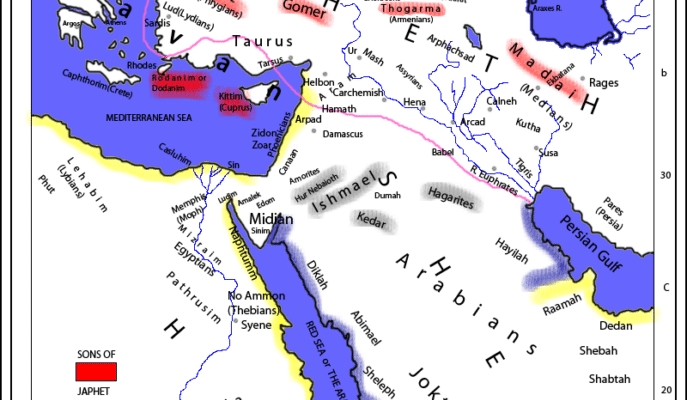
The origin of the Minoans is something that the Bible has a surprising amount to say about. Although it does not go into extensive details, it does refer to their ancestors and other nations to which they were related. But what precisely does the Bible say in terms of the origins of the Minoans?
The Minoans in the Bible
Firstly, we need to establish how the Bible refers to the Minoans, as a different name is actually used for them. The name “Minoans” is a modern term invented by modern scholars, derived from the legend of King Minos, and no ancient source actually refers to them as such.
The Bible actually calls the Minoans the “Caphtorim.” How do we know? For one thing, “Caphtor” was the Hebrew word for Crete. A cognate, “Kaptara,” appears in ancient Assyrian references to Crete. Therefore, the Caphtorim of the Bible are the people of Crete.
In the Book of Deuteronomy, the Bible mentions the Caphtorim as a nation which invaded and conquered part of southern Canaan before the Exodus. This would place this invasion before c. 1500 BCE. The inhabitants of Crete in that era were the Minoans. Hence, the Bible’s reference to the Caphtorim definitely applies to the Minoans.
The origin of the Minoans in the Bible
This fact can help us determine what the origin of the Minoans really was according to the Bible. The ethnonym “Caphtorim” appears in just two other places in the Bible. Both of these are records about the nations which descended from Noah after the Flood.
These records provide the names of the sons, grandsons, and great-grandsons of Noah. Various figures have names which are identical to those of ancient nations, implying that these were the forefathers of those respective nations.
In the case of the Minoans, a figure named Caphtorim appears as one of the sons of Mizraim, the son of Ham, son of Noah. This obviously suggests that he was the eponymous forefather of the people of Caphtor, or, in other words, the Minoans of Crete.
What we know about Caphtorim, ancestor of the Minoans
This claim found in the Bible regarding the origin of the Minoans is fascinating. The reason is that it connects the Minoans to the Egyptians. The name “Mizraim,” the father of Caphtorim, is the ancient Hebrew name for Egypt. Like “Caphtor,” a form of this name is found in Assyrian records concerning Egypt.
This means that the Minoans were supposedly from the same family as the Egyptians. Interestingly, another member of this same family had a connection to Crete. He was Casluhim. The Bible describes Casluhim as the forefather of the Philistines, but elsewhere in the Bible, it is noted that the Philistines came from Crete. Hence, the descendants of Casluhim evidently settled on Crete along with the descendants of Caphtorim.
Archaeology broadly supports this claim in the Bible regarding the origin of the Minoans. It bears out the fact that there were close connections between the Minoans and the Egyptians early on.
For example, archaeology demonstrates connections between Minoan Crete and Egypt from at least as early as the period known as Early Minoan II, the second stage of their history. Furthermore, many scholars believe that Linear A, the script of the Minoans, was inspired by Egyptian hieroglyphs. In fact, even Neolithic Crete shows traces of the Egyptians.



